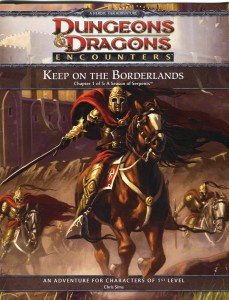 Using the keys found in each of the previous two rooms the heroes opened the doors and entered the vault. They’d found the treasure room. Now all they had to do was find the treasure. The only question now is what kind of guardians will they have to defeat to gain their reward?
Using the keys found in each of the previous two rooms the heroes opened the doors and entered the vault. They’d found the treasure room. Now all they had to do was find the treasure. The only question now is what kind of guardians will they have to defeat to gain their reward?
Our party had six members this week: Berrian, Eldeth, Hagen, Quinn, Sola and another Wizard. We began the encounter by recapping the events to date for one of the new players. It’s amazing just which details players remember and believe are important when compared to what actually happened and what is actually important.
As the back-up DM for my group I have a copy of the adventure, just in case I need to step up and run an encounter or two. I also use it as a reference after Wednesday night’s game while I’m writing up the weekly article. This gives me a lot more insight into what’s actually going on and is one of the big reasons I try not to be the decision-maker for our party.
When the other players recapped the events from the previous 10 weeks I have to bite my tongue and not chime in with important details that they forgot or overlooked. Fortunately the DM of10 does jump in with subtle reminders when this happens, but not always. This is a problem that happens all the time in D&D, but I think it’s even more prevalent with D&D Encounters. After all we only do one encounter a week. After 10 weeks we’re bound to forget some of the details. Unfortunately for us, forgetting those details, even from just a couple of weeks back, made things a lot more difficult during this week’s encounter.

